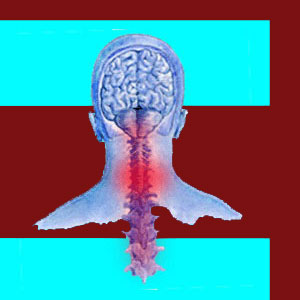
Recovering from facet syndrome pain following successful curative treatment is easy to do, especially when compared to the recuperation process for many other diagnosed conditions of the spine. However, in order to recover, a true cure must first be applied. This is where most patients struggle.
Recovery from any type of chronic pain is a combined process of mind and body. There are things which need to be accomplished physically and psychoemotionally to become pain-free now and remain so far into the future. This is a fact not often discussed in traditional medical circles, which explains why so many treatments fail to deliver satisfying outcomes immediately or eventually.
This dialog provides expert guidance to assist patients in recovering from facet syndrome. We will detail some of the impediments to recovery and provide solutions that will get the vast majority of suffering patients on the right path to a full and freeing recovery.
Recovering from Facet Syndrome through Treatment
In order to recover from facet joint pathology, treatment will usually be required. The structural changes which cause true facet joint pain will not typically resolve by themselves, although this is not an absolute rule. In some cases, mechanical pain due to osteophyte formation in the joints will resolve when continued movement causes the bone spurs to wear away over time. However, many cases worsen with time or simply do not improve, necessitating treatment when true pathology exists.
In order to get on the right road to recovery, you must choose a curative treatment. If you go with symptomatic care, then you will not recover; at least not due to the efforts of your doctor. It still shocks us that many patients do not know the difference between symptomatic care and curative care and write to us with such naive questions as: “Why do I still have pain? I have been taking drugs for years already?” Duh… If you are NOT receiving curative care that seeks to end pain, rather than simply treat the symptoms, then you will NEVER recover, except by some miracle of nature…
When it comes to facet syndrome, curative care will fail into 2 options: Facet joint surgery or nonsurgical spinal decompression. We detail many approaches to care in both of these therapy paths in dedicated articles, so be sure to research your choices and select wisely.
Recovering from Facet Joint Pain Physically
If you choose to undergo nonsurgical spinal decompression and the treatment works, then you will be way ahead of the game. You will simply have to work to regain any lost physical strength or ability caused by your facet syndrome pain. Typically, this only takes nominal effort and some basic physical therapy exercises and stretches. Spinal decompression does not stress or damage the anatomy in any way, so the therapy will not contribute to an extended duration recovery. This is a major selling point.
If you choose to undergo surgical care, then your recovery will be longer and more involved. However, it is still much easier than patients who undergo surgery for most spinal diagnoses. Most patients will simply need to wean themselves off the postoperative medications as soon as possible, while simultaneously undergoing some physical therapy to rebuild strength and range of motion as noted above and overcome any trauma that was caused to the body by the procedure itself.
If you are fortunate enough to have your facet joint syndrome resolve organically, then your recovery process will likely also come about naturally through simple movement and activity. Consider yourself truly lucky if this is the case!
Recovering from Facet Syndrome Psychoemotionally
Psychological recovery is just as important as physical, if not exponentially more so. Patients who do not recuperate psychologically will have a much greater chance of suffering a recurrence of pain following successful treatment or a symptom substitute syndrome that will put them right back in agony and in treatment.
It is vital to understand the facts of facet syndrome and not buy into the many mythologies circulating in the general population about the spine never being the same after such a diagnosis. There is no reason that every patient can not make a full and complete recovery and live normally thereafter as long as the diagnosis was correct and treatment was indeed successful.
It is crucial to remember that many facet joint degeneration conditions are unfairly blamed for causing pain. This misdiagnosis is an epidemic problem in the back and neck pain treatment industry. Many patients undergo all manner of treatments, including surgery, for conditions that do not require any treatment at all. This is because the degeneration imaged and diagnosed was never the true source of pain.
In many, many of these profiles, the actual origin of pain is the mindbody processes. Even if the treatment is performed perfectly, pain will not end or will soon return, since the therapy will merely act as a placebo. This is why we always recommend integrating knowledge therapy into every treatment program in order to combat the high incidence of misdiagnosis and dispel the powerful nocebo reaction that can cause pain to persist despite successful care being implemented.
Facet Joint Pain > Facet Syndrome Relief > Recovering from Facet Syndrome





